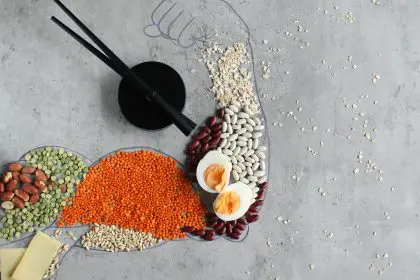Inside each of the trillions of cells that make up the human body, a sophisticated recycling and renewal system operates continuously, breaking down damaged components and regenerating healthy ones. This process, called autophagy from the Greek words for “self” and “eating,” represents one of the most promising frontiers in longevity research and may hold keys to preventing everything from neurodegenerative diseases to cancer.
The importance of this cellular housekeeping mechanism became fully recognized in 2016 when Japanese scientist Yoshinori Ohsumi was awarded the Nobel Prize in Medicine for his groundbreaking research on the autophagy process. Since then, research has accelerated dramatically, revealing not only autophagy’s critical role in health but also practical ways to enhance this natural process through specific lifestyle interventions.
Understanding the autophagy mechanism
At its core, autophagy is a survival mechanism that allows cells to adapt to changing conditions and stress. When activated, the process identifies damaged proteins, dysfunctional mitochondria, and other cellular components that are no longer functioning optimally. These components are then engulfed in double-membrane vesicles called autophagosomes, which subsequently fuse with lysosomes, cellular structures containing enzymes that break down biological material.
The resulting breakdown products such as amino acids, fatty acids, and other molecular building blocks are then recycled back into the cellular manufacturing process to create new, functional components. This elegant system of cellular “quality control” helps prevent the accumulation of dysfunctional proteins and organelles that can lead to cellular dysfunction and, ultimately, disease.
Research from institutions including the University of Michigan and Harvard Medical School has demonstrated that autophagy plays essential roles in preventing neurodegenerative conditions, improving metabolic health, enhancing immune function, and potentially extending lifespan. The process appears particularly critical during aging, when cellular damage naturally accumulates and autophagy efficiency typically declines.
The 6 key strategies to enhance autophagy
Based on current research, several strategies have emerged as effective methods for activating and enhancing the autophagy process. These approaches range from dietary modifications to specific exercise protocols, all sharing the common thread of imposing beneficial stress that triggers the body’s cellular cleanup response.
Intermittent fasting and time-restricted eating: Perhaps the most potent and well-studied trigger for autophagy is caloric restriction and various fasting protocols. When food intake stops, particularly carbohydrates, insulin levels drop and cellular energy sensors begin to signal the need for internal recycling of nutrients. This metabolic shift typically begins after 12-16 hours of fasting, with autophagy increasing significantly between 24 and 48 hours of food restriction.
Time-restricted eating, confining food intake to a 6 to 10 hour window each day, offers a more sustainable approach than extended fasting. Research from the Salk Institute has shown that even without reducing total caloric intake, simply constraining eating to a shorter daily window can enhance autophagy markers in various tissues, particularly in the liver and brain.
For those new to fasting, starting with a 12-hour overnight fast (for example, finishing dinner at 7 p.m. and having breakfast at 7 a.m.) and gradually extending the fasting window provides a measured approach to autophagy activation. More extended protocols, such as 24 to 48 hour fasts, show more profound autophagy activation but should be approached with medical guidance, particularly for individuals with underlying health conditions.
High intensity exercise: Physical activity, particularly high intensity protocols that temporarily deplete energy reserves, represents another powerful autophagy trigger. Exercise initiates autophagy through multiple pathways, including increased energy demands, production of reactive oxygen species, and activation of energy sensing enzymes like AMPK (adenosine monophosphate activated protein kinase).
Research published in Nature has demonstrated that both resistance training and cardiovascular exercise enhance autophagy markers, with the most pronounced effects occurring after high intensity interval training (HIIT). These workouts, which alternate short bursts of intense effort with recovery periods, appear particularly effective at signaling cellular cleanup processes.
The autophagy response to exercise shows tissue specificity, with muscle, liver, and brain tissues demonstrating different activation patterns and timelines. Regular physical activity maintains a baseline of enhanced autophagy, while occasional more intense sessions may trigger deeper cellular cleaning, similar to how regular housekeeping differs from seasonal deep cleaning.
Dietary polyphenols and specific nutrients: Beyond when we eat, what we eat also influences autophagy activation. Certain plant compounds, particularly polyphenols found in colorful fruits and vegetables, appear to stimulate the cellular cleanup process through various molecular pathways.
Resveratrol (found in red grapes, red wine, and berries), curcumin (the active compound in turmeric), EGCG from green tea, and quercetin (abundant in apples, onions, and many other plant foods) have all demonstrated autophagy-enhancing properties in research settings. These compounds appear to work through different but complementary mechanisms, suggesting benefits from dietary diversity.
Specific nutrients also support the autophagy process. Omega-3 fatty acids, spermidine (found in wheat germ, soybeans, mushrooms, and aged cheese), and sulforaphane (from cruciferous vegetables like broccoli and kale) have all shown autophagy-enhancing effects in various research models. A Mediterranean dietary pattern, rich in these compounds, may support optimal autophagy function as part of its overall health benefits.
Cold exposure: The hormetic stress of cold exposure, whether through cold showers, ice baths, or winter swimming, triggers multiple cellular adaptation mechanisms, including enhanced autophagy. Cold exposure activates the sympathetic nervous system, increases norepinephrine secretion, and alters metabolic pathways in ways that promote cellular cleanup.
Research from Scandinavian universities, where cold exposure traditions run deep, has shown that regular cold immersion upregulates autophagy markers and improves cellular stress resistance. The practice appears to be particularly beneficial for neurological tissues, with animal studies demonstrating neuroprotective effects of cold-induced autophagy.
Practical application can begin with simply finishing a regular shower with 30 seconds of cold water, gradually increasing the duration as tolerance builds. More advanced practitioners may implement ice baths or cold plunges, though as with all hormetic stressors, proper gradual adaptation is essential for safety and benefit.
Quality sleep and circadian rhythm alignment: The nightly fasting period during sleep represents an important window for autophagy activation, particularly in brain tissues. Research from the University of Rochester has demonstrated that during deep sleep, brain cells shrink slightly, allowing for increased flow of cerebrospinal fluid and enhanced clearance of metabolic waste products through what’s known as the glymphatic system, a process tightly linked to autophagy.
Disruption of sleep or circadian rhythms impairs this nocturnal cleaning process. Studies comparing night shift workers with those working regular daytime hours show significantly altered autophagy markers in the former group, potentially contributing to their increased risks of metabolic and cardiovascular diseases.
Practical strategies include maintaining consistent sleep and wake times, avoiding late night eating (which can disrupt both sleep and autophagy), limiting blue light exposure in the evening, and creating sleep environments conducive to reaching deeper sleep stages where brain autophagy is most active.
Periodic protein restriction: While complete fasting provides the strongest autophagy stimulus, research suggests that selectively restricting protein intake, particularly animal protein rich in certain amino acids, can also trigger significant autophagy activation. Limiting methionine and leucine, two amino acids abundant in animal proteins, appears particularly effective at inducing cellular cleanup processes.
Plant forward dietary patterns naturally lower in these amino acids show associations with longevity benefits potentially mediated through autophagy pathways. Strategies like meat free days or regular plant based meal patterns offer practical approaches to periodic protein modification that may enhance autophagy without requiring strict vegetarianism.
This approach aligns with traditional dietary patterns in many of the world’s Blue Zones, regions with exceptionally high concentrations of centenarians, where animal protein typically serves as a condiment rather than a dietary centerpiece, and periods of reduced protein intake often align with traditional religious or cultural fasting periods.
Balancing autophagy activation
While evidence supporting autophagy enhancement continues to accumulate, researchers emphasize that more is not always better. Autophagy represents a finely tuned homeostatic mechanism that can become problematic if either insufficient or excessive. The goal is not perpetual maximum autophagy but rather regular activation of this natural cleaning cycle.
The most effective approach appears to be cycling between periods of autophagy activation (through fasting, exercise, etc.) and periods of cellular rebuilding (with proper nutrition and recovery). This pattern mimics the natural cycles that humans likely experienced throughout evolutionary history, with periods of food scarcity prompting internal recycling followed by rebuilding during times of abundance.
Different tissues also demonstrate unique autophagy response patterns and requirements. Neural tissues appear particularly dependent on appropriate autophagy function, with impairments linked to neurodegenerative conditions like Alzheimer’s and Parkinson’s diseases. Muscle tissue, meanwhile, requires balanced autophagy to maintain proper function, particularly during aging when muscle maintenance becomes more challenging.
The future of autophagy research
As research continues to unravel the complexities of cellular autophagy, pharmaceuticals targeting specific aspects of the process are under development. Compounds that can enhance autophagy in tissue-specific ways or target particular aspects of the process may eventually complement lifestyle approaches, particularly for treating established disease conditions.
For now, however, lifestyle modifications remain the most proven and accessible methods for enhancing this critical cellular housekeeping mechanism. The growing body of research suggests that many traditional health practices, from various fasting traditions to cold water immersion to plant centric diets, may derive significant benefits through autophagy enhancement.
What makes autophagy particularly intriguing as a health target is its fundamental nature, it represents not a downstream symptom but a primary cellular process influencing countless aspects of health. By supporting this basic mechanism of cellular maintenance, the potential exists to simultaneously address multiple aspects of aging and disease risk, potentially extending both lifespan and the more important “healthspan”, the period of life spent in good health.
As one Harvard researcher noted, autophagy represents the cellular basis for the old adage that what doesn’t kill you makes you stronger. By imposing beneficial stresses through fasting, exercise, and other interventions, we may be able to stimulate our cells’ innate cleaning and recycling systems, setting the stage for more resilient health across the lifespan.














